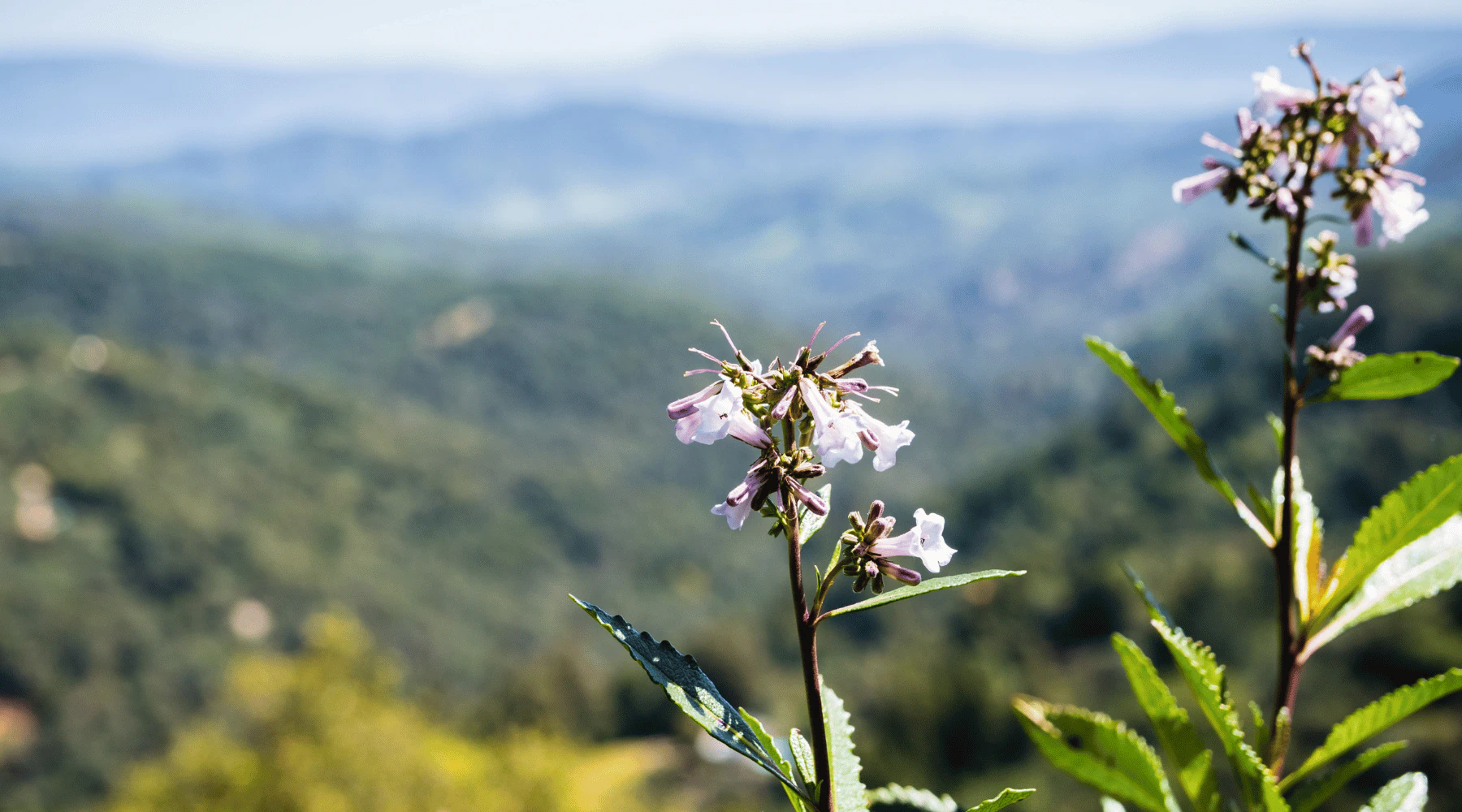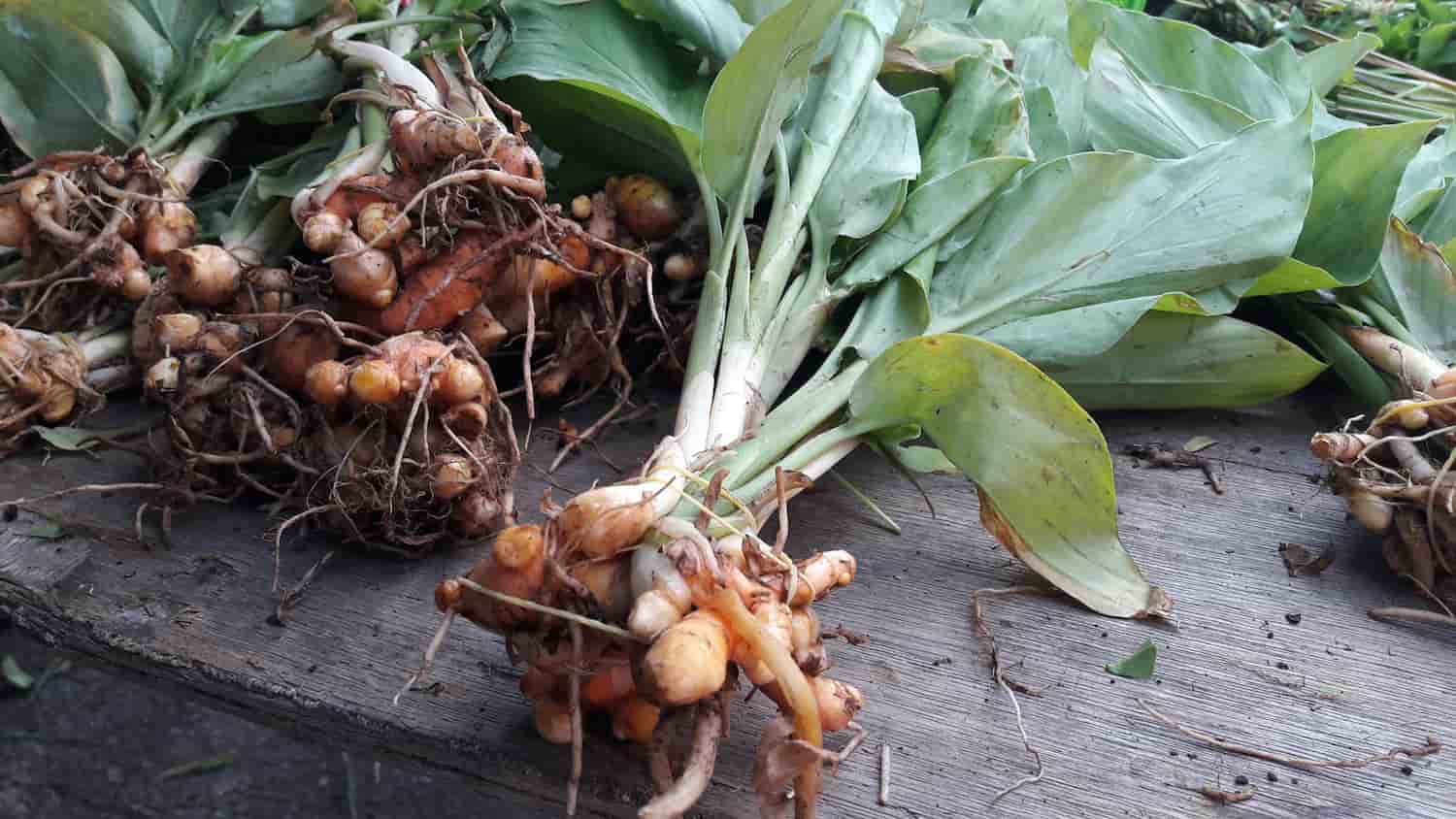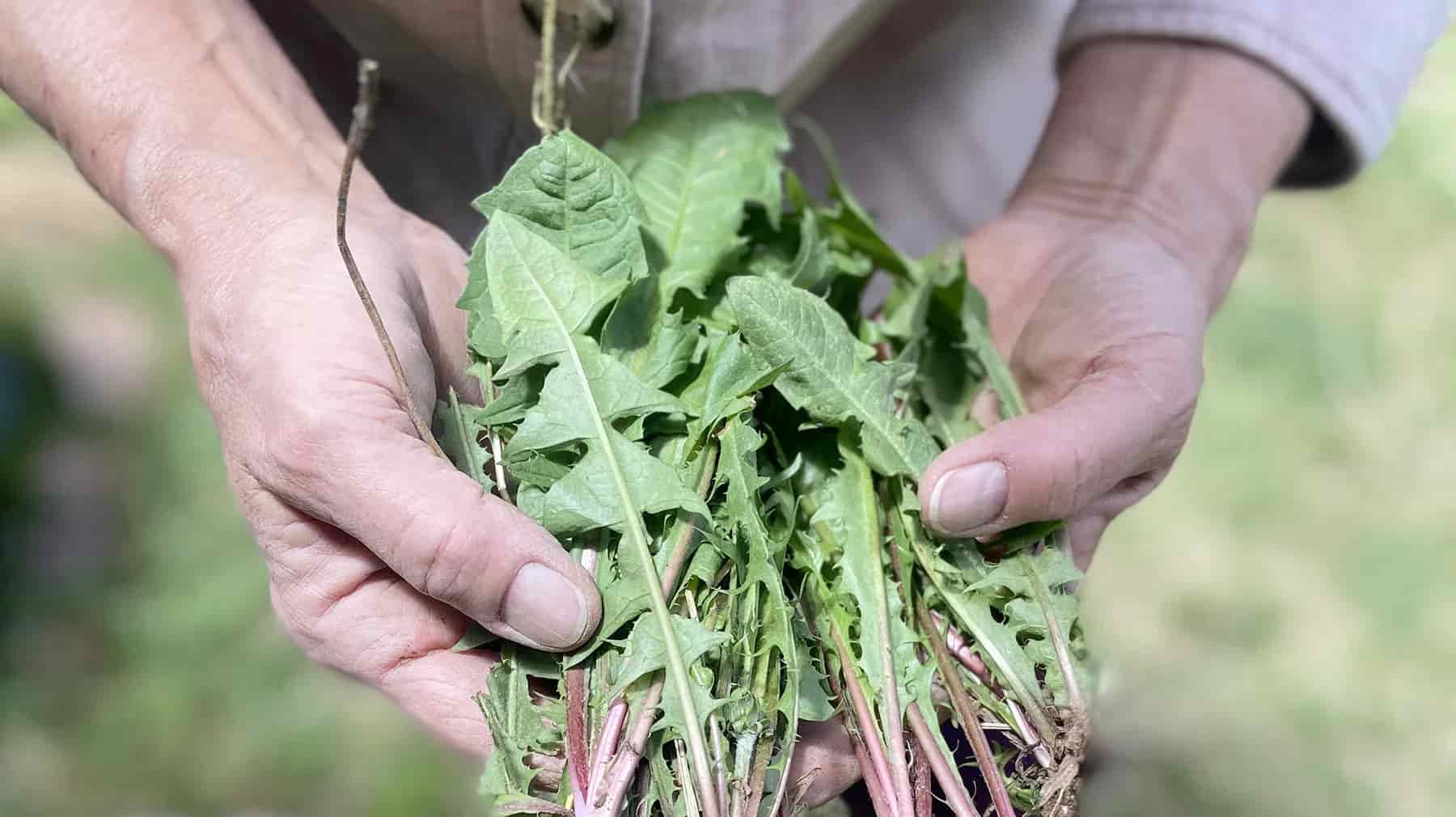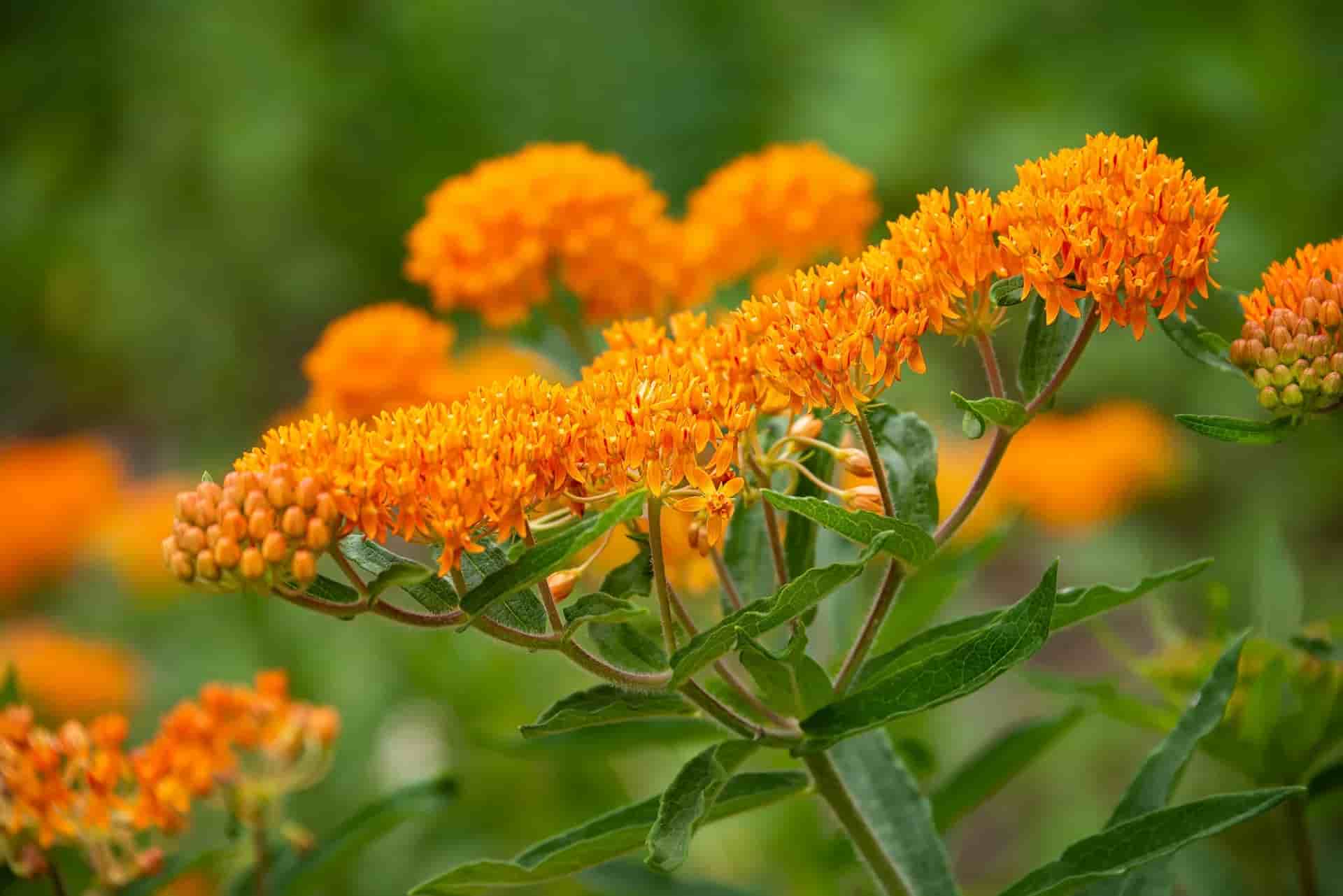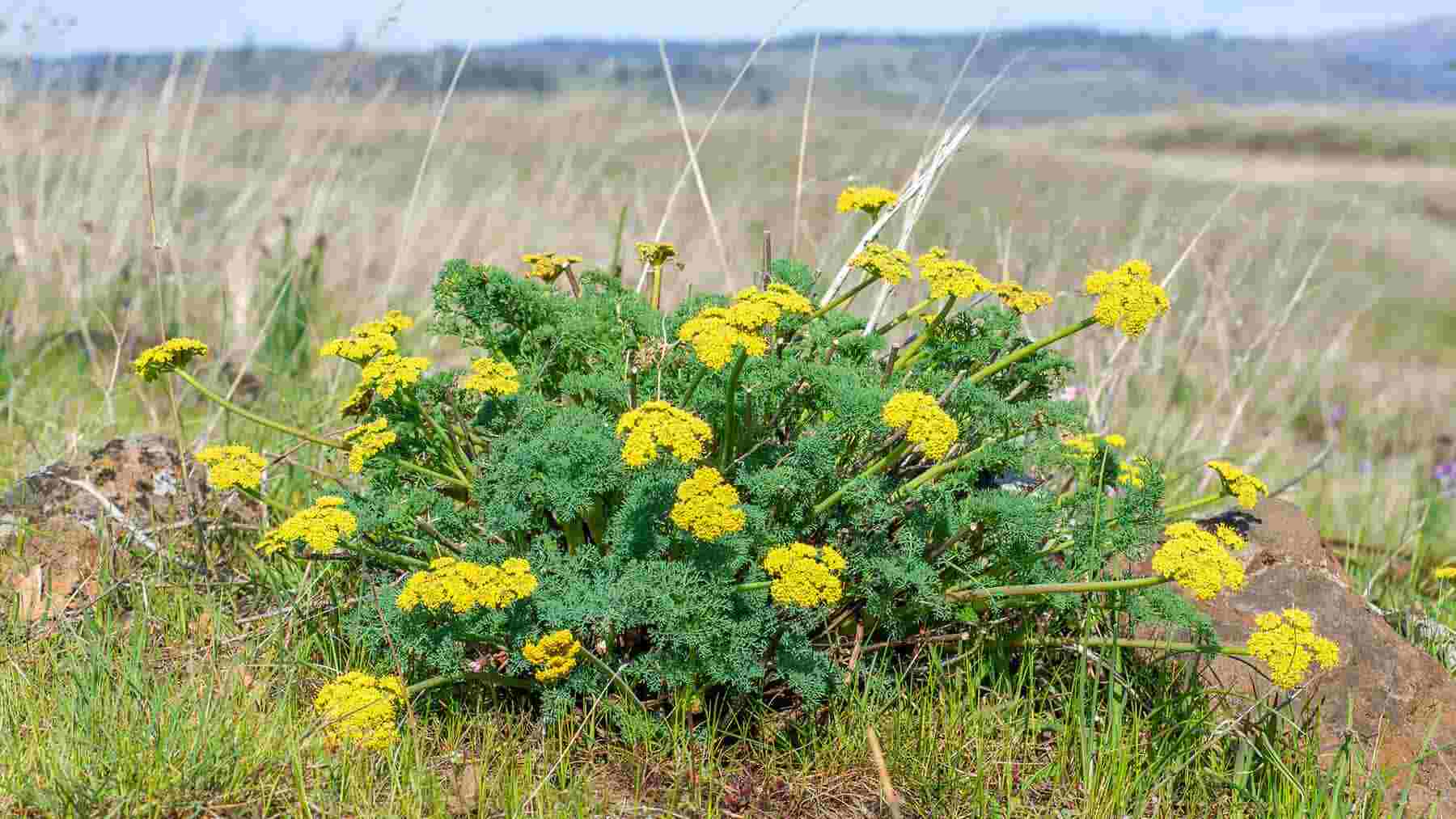Lomatium dissectum, or Lomatium root, is cherished among herbalists, plant lovers, and northern Native American tribes. It’s known to support a healthy respiratory, inflammatory, and immune response, making it the perfect herb to highlight during these wellness-challenging winter months.
Botany of Lomatium
Lomatium root belongs to the Apiacceae or carrot plant family. Its common names include wild carrot, desert parsley, toza, giant Lomatium, and fernleaf biscuitroot (yes, you read that correctly!) Much like its medicinal carrot family members, the root can take many years to mature before being ready to harvest in the Autumn season. Lomatium is abundant within the Rocky Mountains and can be found from 500 to 10,000 feet in elevation. Its fern-like leaves and yellow or purple flowers emerge from snow packed grounds in early springtime to greet pollinators and rummaging wildlife. Modern day humans also forage for Lomatium root, however we typically make it into a tincture to preserve its medicinal qualities all winter long.

It’s important to note that Lomatium root looks very similar to its poisonous relative, hemlock. Hemlock, also apart of the Apiacceae, is an invasive plant with fern-like leaves, bright green stalks, and has umbel formation flowers, a characteristic of plants belonging to the Apiacceae family. Umbel formations on a hemlock look very similar to the umbrella shaped flower of a Lomatium. Hemlock can be distinguished by looking for purple spots on the green stalk and it has many white umbellet flower formations. Lomatium has yellow or purple flowers with no purple spots on its stalks. Be sure to always consult your local foraging professional or botany books for reference!
Ethnobotany of Lomatium
Lomatium root, or fernleaf biscuitroot as it's often referred to by native tribes, is deeply rooted in Native American herbal culture and plays a large role in tribal ceremonies. The Blackfeet tribe burned smashed root as incense and the Navajo people included it in their "Mountain Top Chant ceremony" blend (USDA). It makes you wonder - because the Apiacceae family has a wide variety of aromatic plants, did native tribes find Lomatium's medicinal use through ceremony? In addition to incense use, The Ute tribe found it useful to treat "horse’s distemper," by using smoke inhalation of the burned root.
There are many aromatic plant compounds found in the root of Lomatium therefore steaming the roots served as a respiratory aid. The Okanagan tribe’s infusions are particularly fascinating because they made a hot water infusion from dried roots for their elder’s occasional joint discomfort flare ups (USDA). Lomatium root supports a healthy inflammatory response in our bodies and can combat pesky bug invaders that cause respiratory dysfunction.
Modern Use
The medicinal use of Lomatium root has expanded globally. This fantastic root is most commonly used by practitioners in a single herb tincture form to support a healthy respiratory and immune system. At WishGarden, we use it in blends with moist herbs because of its drying nature. Get Over It! and Serious V-Fighter contain a synergistic blend of herbs for fighting pesky bug invaders during the harsh winter months.
References
- FERNLEAF BISCUITROOT Lomatium dissectum (Nutt.) Mathias & Constance
- Fernleaf Biscuitroot– Lomatium dissectum
Lauren Ann Nichols-Sheffler attended The Colorado School of Clinical Herbalism and received her certificate in medical herbalism. She is the owner of Blue Yarrow Herbs aka Herbal Vice, an herbal product company practicing bioregional herbalism by cultivating plants and sourcing locally. Lauren loves educating and advocating for plant sustainability. She is the sourcing and Purchasing manager for WishGarden Herbs.
For educational purposes only. This information has not been evaluated by the Food and Drug Administration. This information is not intended to diagnose, treat, cure, or prevent any disease, or sell any product.
Recommended Products
Further Reading
